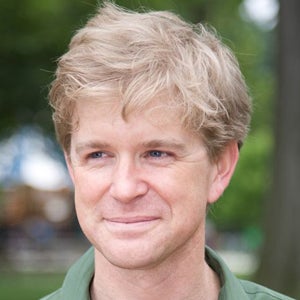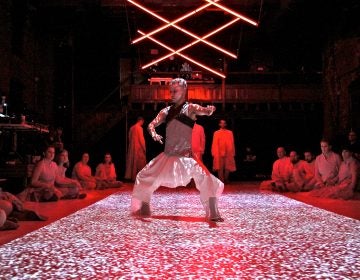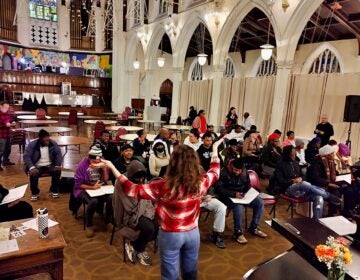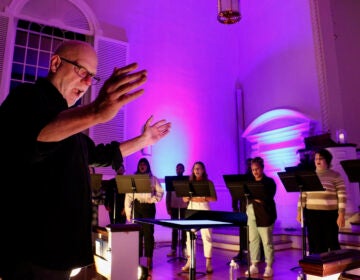The meaning of the universe is debated in a premiere by The Crossing choir
Sebastian Currier’s “Mysterium” is based on the husband-and-wife team of scientist Robbert Dijkgraaf and novelist Pia de Jong.
From Philly and the Pa. suburbs to South Jersey and Delaware, what would you like WHYY News to cover? Let us know!
Over the past 20 years, The Crossing choir has sung its way through some truly unexpected musical territory — an imagined religion of charity, the economics of food, the history of the flu, a science fiction space dystopia, the body parts of Jesus, and even the poetry of trash dancing in the street.
Now, fresh off its fourth Grammy win last weekend, The Crossing is singing about the grandest theme yet: The entirety of the universe.
“Mysterium,” by composer Sebastian Currier, will be performed by The Crossing on Friday at the Presbyterian Church of Chestnut Hill. The world premiere will be on the program “What Can I Know?” alongside the North American premiere of composer Linda Catlin’s “Folio,” based on the work of poet Emily Dickinson.
“Mysterium” is based on the concept of the Cosmic Microwave Background, or residual radiation leftover from the Big Bang that now permeates every inch of the universe. Discovered in the 1960s, CMB not only proves the Big Bang concept but also maintains measurable traces of it.
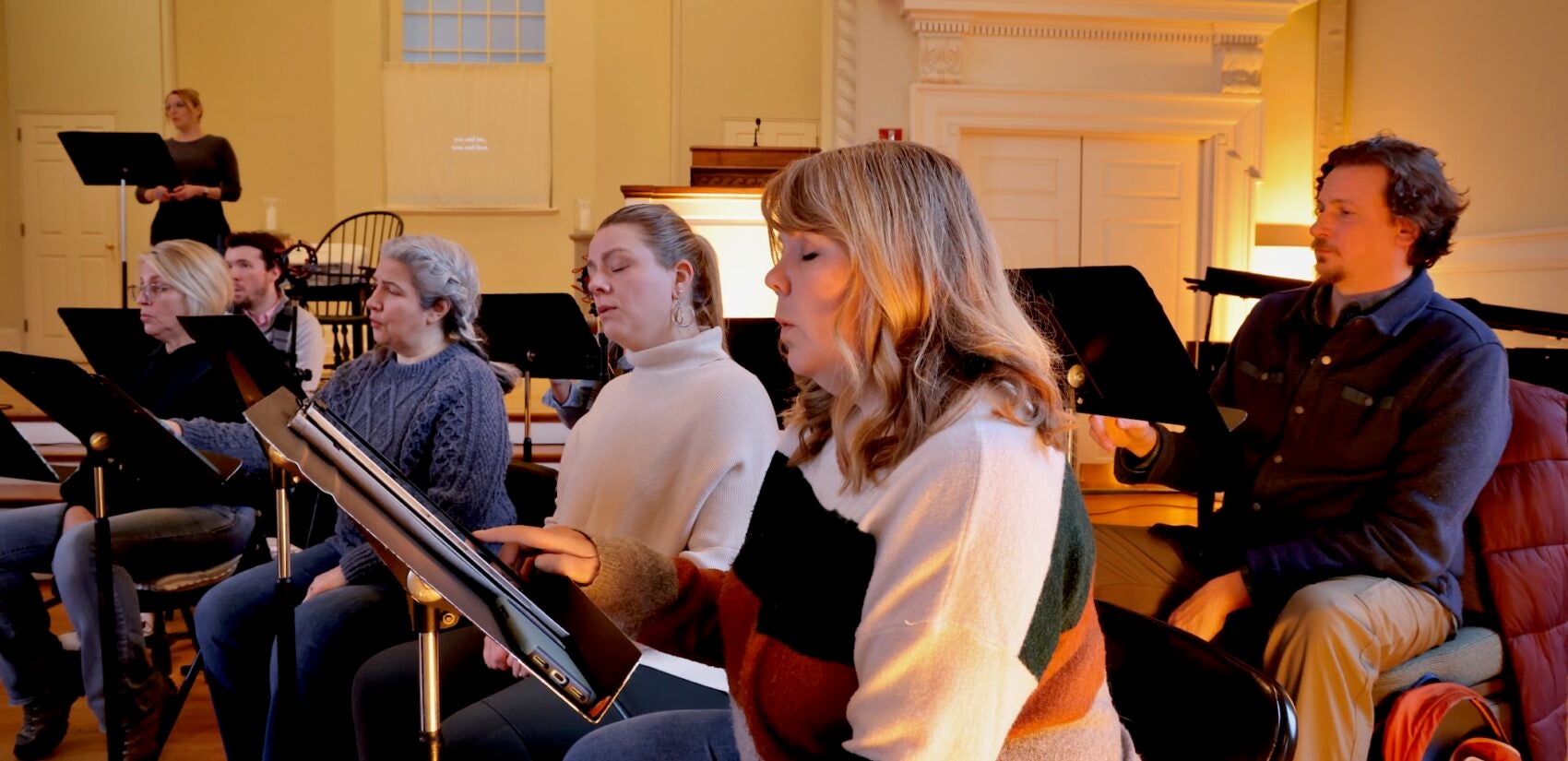
Like baseball stats listed in a newspaper the day after a game, scientists can read the CMB and get a picture of what happened 13.8 billion years ago.
“What I find amazing is not so much that it’s out there, but what I find truly amazing is that we were able to receive that message,” said mathematical physicist Robbert Dijkgraaf, who contributed text to “Mysterium.”
“It’s us humans on planet Earth in the last, say, 50 years who have discovered that message, have decoded it,” he said. “We physicists call it a baby photo. It’s the oldest photograph that you can take of the universe.”
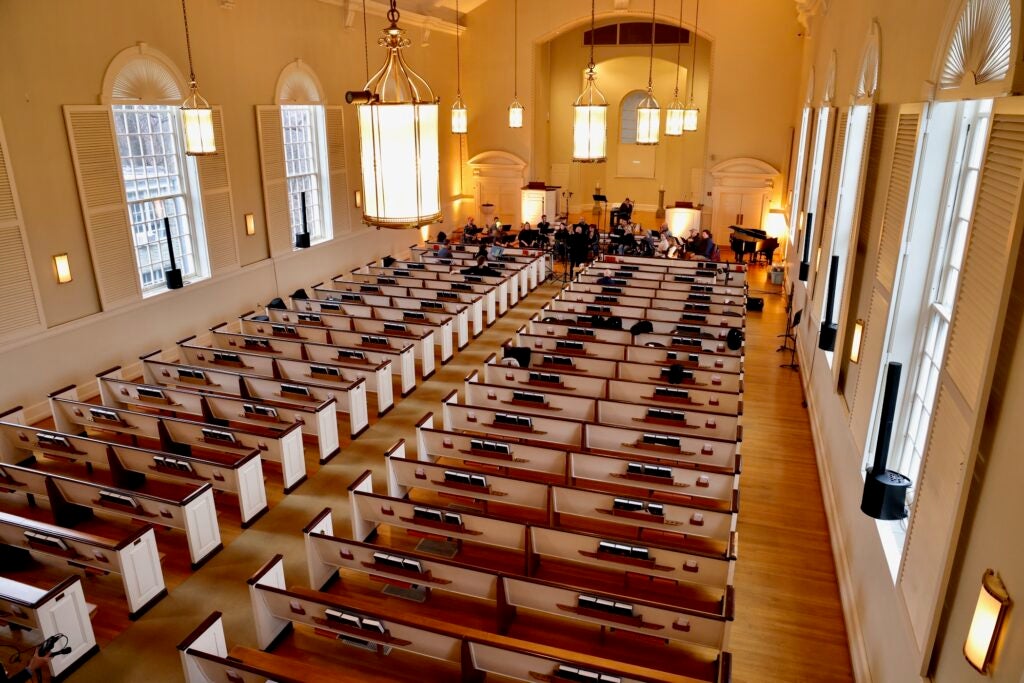
Dijkgraaf was director of the Institute for Advanced Study in Princeton, N.J., from 2012- 2022. He met Currier when the latter was an artist in residence at IAS. Dijkgraaf has since moved back to The Netherlands to take the role of Dutch Minister of Education, Culture and Science. He is now president of the International Science Council, aka the United Nations of global science.
He is popular in his home country for his semi-regular television appearances, where Dijkgraaf explains complex scientific concepts to a general audience.
“I think of him as the Carl Sagan of the Netherlands,” said Currier.
Currier recreated an approximation of what the Cosmic Microwave Background might sound like when transposed into electronic music, similar to white noise, to accompany the voices of The Crossing. He asked Dijgraaf and his wife, novelist and memoirist Pia de Jong, to write lyrics for the piece.
“Mysterium” alternates between their two perspectives, with Dijkgraaf offering thoughts about the awe of space and de Jong describing the worries of navigating life on Earth.
“When we look at the night sky, we see back in time,” opens “Mysterium” with Dijkgraaf’s words. “Like leafing through an immense book, we read the entire history of the universe, star by star, galaxy by galaxy.”
But de Jong does not share her husband’s scientific fascination. For her, the universe isn’t some grand puzzle waiting to be solved but an unpredictable and ever-shifting landscape. She contributed text recalling an early point in their marriage as she unpacked boxes after relocating to Princeton. She describes a feeling of instability in a period of upheaval.
“The night sky is so beautiful, but the vastness of the universe frightens me,” she writes. “The universe began with the random movements of the smallest particles.”
“At the Institute for Advanced Study, the place where Einstein worked and all these big scientists, people are very much in awe with stories about the universe and the beauty of it. The elegance,” de Jong said in an interview from the couple’s current home in The Netherlands.
“For me, there’s also the anxiety and the randomness of it all,” she said. “That’s my personal perspective of it.”
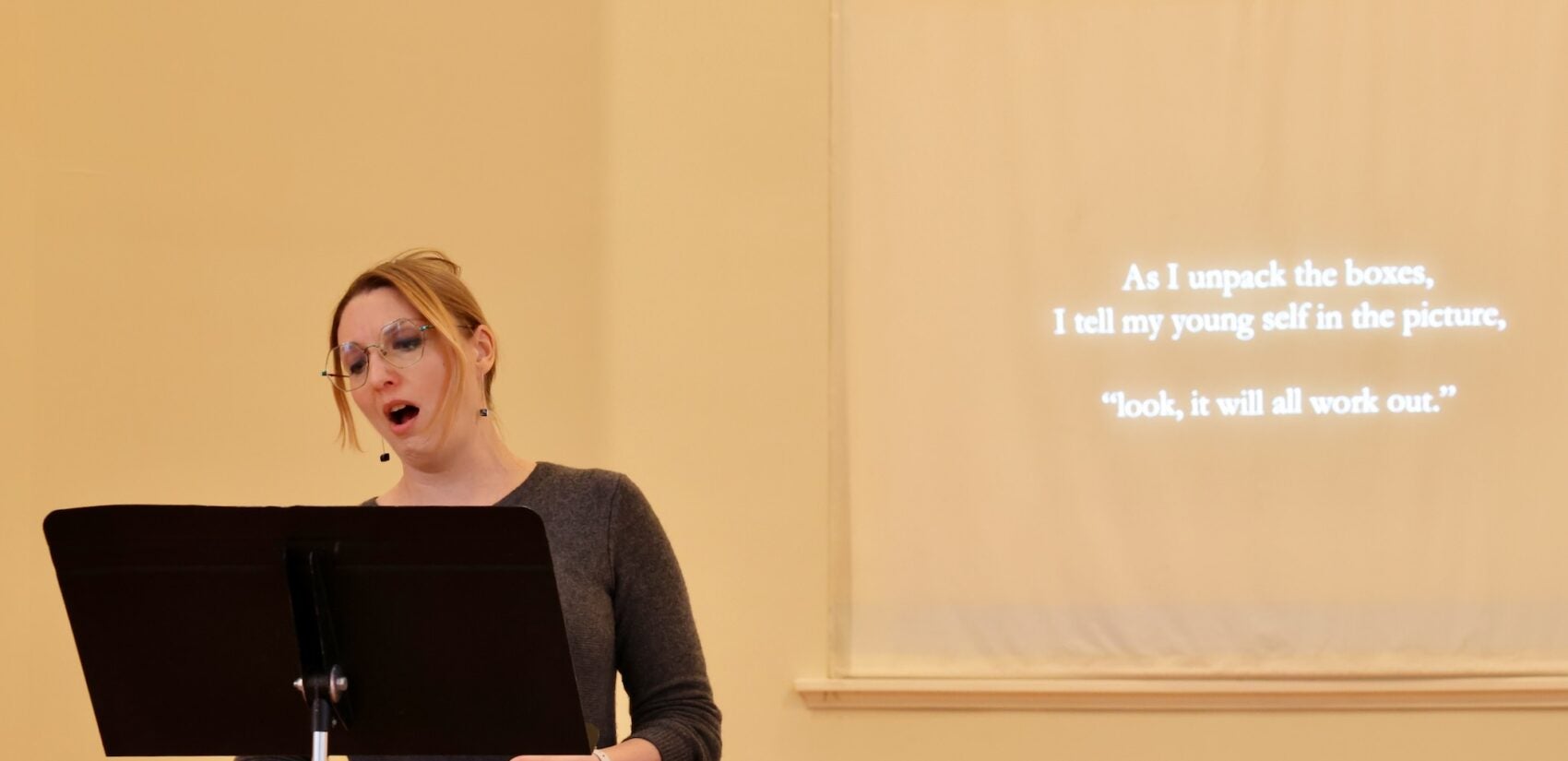
In writing the music for “Mysterium,” Currier found energy between those two poles of scientific curiosity and emotional uncertainty.
“Randomness is one of the most fundamental things of the universe. The universe would never have formed without quantum randomness,” he said. “What gave the CMB those differentiations in temperature and to form galaxies was randomness.”
Currier challenged himself to write a piece of choral music that hearkened back to the format’s beginnings — when it was mostly used in religious settings — but used science instead of theology to evoke a similar sense of the sublime.
“A lot of science is even more unbelievable and remarkable than anything you can imagine, but in the end, it doesn’t carry the certainty that religion does,” he said. “It’s about accepting this mysterious place we find ourselves.”
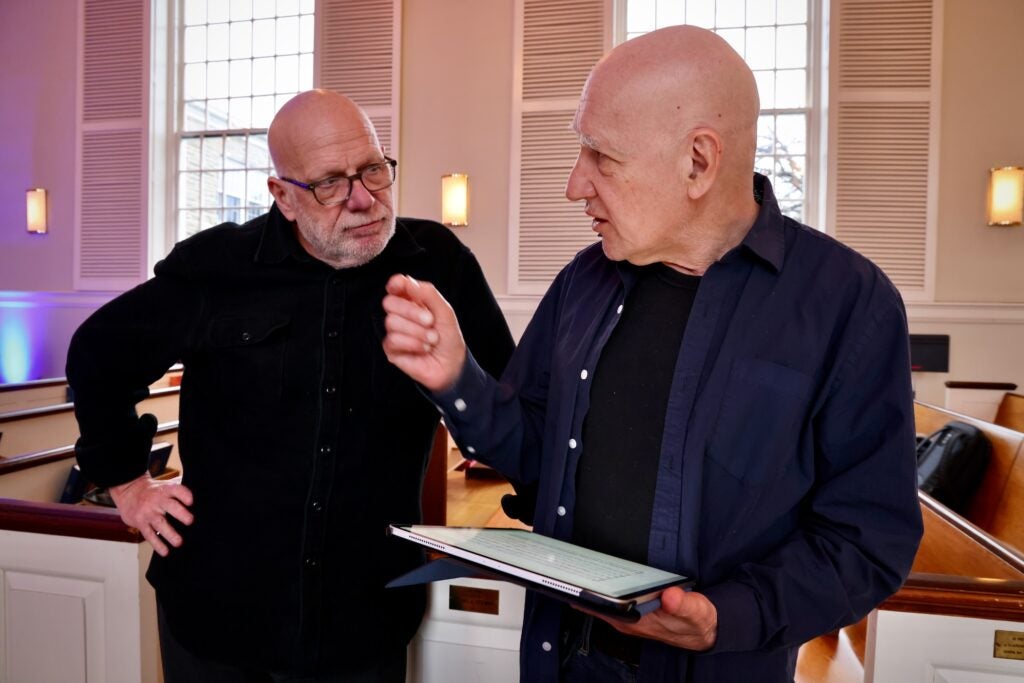
“Mysterium” was conceived several years ago with plans to perform it in The Netherlands, where Dijkgraaf would open the concert with a short lecture introducing some of the scientific concepts. However, complications caused by the COVID-19 pandemic squashed that idea.
Dijkgraaf and de Jong will not be traveling from The Netherlands to attend the premiere by The Crossing at the Presbyterian Church of Chestnut Hill, for which they expressed regret. They have not yet heard the music that accompanies the words they wrote years ago, but they are both thrilled that the piece will finally debut.
Dijkgraaf has long been a champion of integrating art with science.
“We are, in some sense, the ear of the universe,” he said. “It would be a pity if only a small group of scientists can enjoy this. Music has an ability to cross cultures in an incredibly powerful way.”
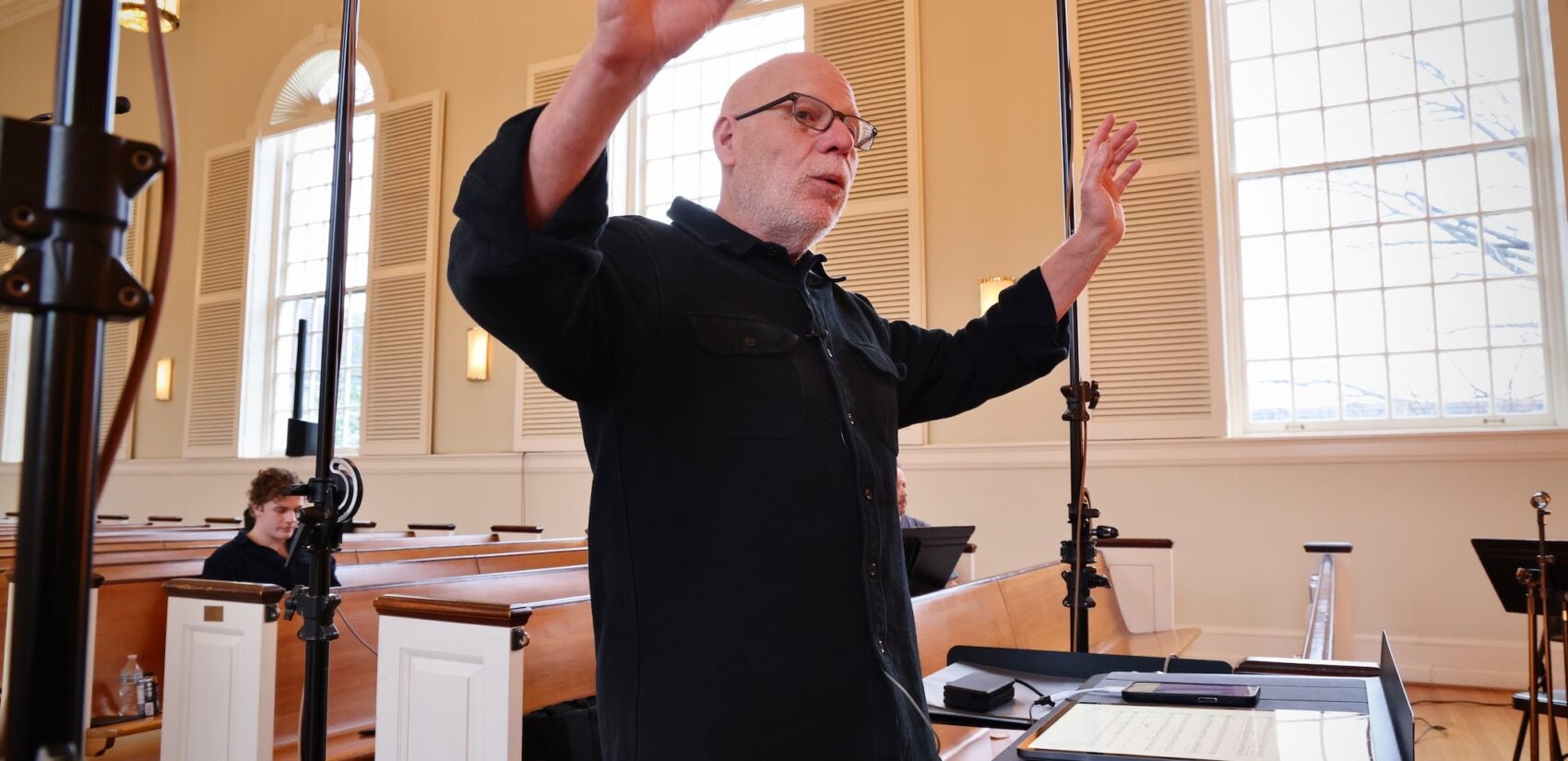

Saturdays just got more interesting.
WHYY is your source for fact-based, in-depth journalism and information. As a nonprofit organization, we rely on financial support from readers like you. Please give today.


